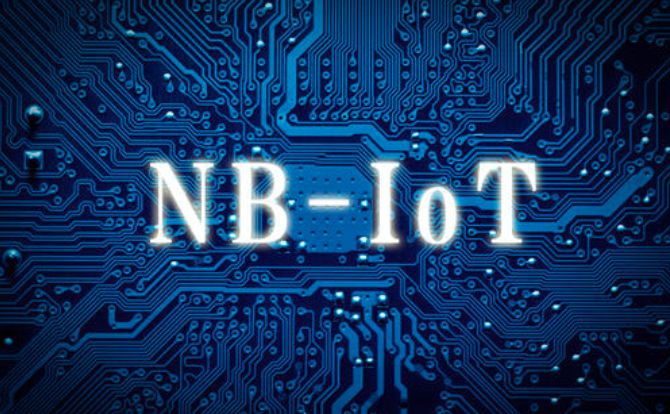

 咨询热线 15388025079
咨询热线 15388025079 时间:2022-03-14 21:27:45 浏览量:642
Detailed explanation of nb-iot network architecture
NB-IoT refers to Narrow Band-Internet of Things technology. Focusing on the Low Power Wide Coverage (LPWA) Internet of Things (IoT) market, NB-IOT is an emerging technology that can be widely used around the world. NB-IOT uses the license frequency band, and can be deployed in three ways: in-band, guard band, or independent carrier to coexist with the existing network.
NB-IoT is an emerging Internet of Things technology. It has attracted much attention because of its low power consumption, stable connection, low cost, and excellent architecture optimization. Huawei, as a domestic leader in the research and development of NB-IoT technology, has also attracted much attention from the scientific and technological circles.

Advantages of NB-IoT
1. Strong links
In the case of the same base station, NB-IoT can provide 50-100 times the number of accesses than existing wireless technologies. One sector can support 100,000 connections, supporting low latency sensitivity, ultra-low equipment cost, low equipment power consumption and optimized network architecture. For example, limited by bandwidth, operators only open 8-16 access ports for each router in the family, and there are often multiple mobile phones, notebooks, and tablet computers in a family. Hundreds of sensor devices need to be connected to the Internet, which has become a difficult problem. NB-IoT is enough to easily meet the networking needs of a large number of devices in future smart homes.
2. High coverage
NB-IoT has strong indoor coverage, with a 20dB gain compared to LTE, which is equivalent to a 100-fold increase in coverage area capability. Not only can it meet the needs of wide coverage in rural areas, but it is also suitable for applications that require deep coverage such as factory areas, underground garages, and manhole covers. Take manhole cover monitoring as an example. In the past, the GPRS method required an antenna to be extended, and the vehicles were easily damaged. As long as NB-IoT is properly deployed, this problem can be well solved.
3. Low power consumption
Low power consumption is an important indicator for IoT applications, especially for some devices and occasions where batteries cannot be replaced frequently, such as various sensing and monitoring devices placed in remote areas of alpine wilderness, they cannot be charged like smartphones once a day. , a battery life of up to several years is the most essential requirement. NB-IoT focuses on small data volume and low rate applications, so the power consumption of NB-IoT devices can be very small, and the battery life of the device can be greatly increased from the past few months to several years.
4. Low cost
Compared with LoRa, NB-IoT does not need to rebuild the network, and the radio frequency and antenna are basically multiplexed. Taking China Mobile as an example, there is a relatively wide frequency band in 900MHZ, and it is only necessary to clear a part of the 2G frequency band to directly deploy LTE and NB-IoT at the same time. Low speed, low power consumption, and low bandwidth also bring low-cost advantages to NB-IoT chips and modules. Modules are expected to cost no more than $5.
NB-IOT Features
1. Narrow spectrum: 200kHz;
2. The terminal transmits a narrowband signal, which improves the power spectral density of the signal, improves the coverage gain of the signal, and improves the efficiency of spectrum utilization;
3. The repeated transmission of the same data packet can also obtain better coverage gain;
4. In addition, this technology reduces the activation ratio of the terminal and reduces the complexity of the terminal baseband;
5. Four major capabilities of NB-IOT: wide coverage, massive connections, lower power consumption, and lower chip cost;
6. NB-IOT is based on the technology of the existing cellular network, which can quickly support the market demand of the industry by upgrading the existing network, becoming the fourth mode on the GUL network.
Detailed explanation of nb-iot network architecture
1) NB-IoT terminal: connected to the base station through the air interface.
2) eNodeB: It is mainly responsible for air interface access processing, cell management and other related functions, and is connected to the IoT core network through the S1-lite interface, and forwards non-access layer data to high-level network elements for processing. It should be noted here that NB-IoT can be networked independently or integrated with EUTRAN (as mentioned in the duplex mode, NB can only support FDD, so it must be integrated with FDD)
3) IoT core network: undertakes the function of interacting with the terminal non-access layer, and forwards IoT business-related data to the IoT platform for processing. In the same way, NB can independently form a network here, or can share a core network with LTE.
It should be noted that it is lazy and irresponsible to write the IoT core network in general here. The following will introduce this in detail, which involves more technical details.
4) IoT platform: Aggregate IoT data obtained from various access networks, and forward it to corresponding service applications for processing according to different types.
5) Application server: It is the final convergence point of IoT data, and performs data processing and other operations according to customer needs.
相关推荐
相关产品